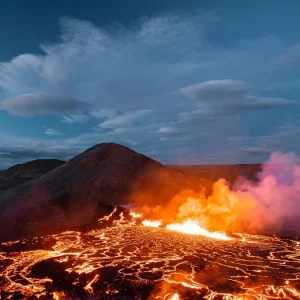
New Zealand today has more ethnicities than there are countries in the world. Starting in 2013, the land of the Kiwis has seen record net gains of migrants from countries such as India, China, the Philippines and Britain. New Zealand’s two largest immigrant pools are Chinese and Indians—who now comprise of 17 and 16 percent of the population respectively—and are dominated by visa-holding students and those searching for either permanent or temporary residency, who have better job opportunities away from home. This uptick has allowed New Zealand to top the OECD charts in influx of numbers arriving per head of population, and has had manifold effects on the country.
New Zealand first attracted migrants with its high quality lifestyle and comparably better job prospects. This has notably increased the diversity of New Zealand, yet simultaneously highlights the profound job discrimination that exists against Chinese and Indian immigrants. Job discrimination does not take into account immigrants’ prior qualifications, exploits foreign workers with sub-minimum wage pay, and leaves immigrants with few choices but to rely on their own family networks. Chinese and Indian immigrants can then only become gainfully employed by starting their own businesses, often in the food industry. When working harder for fewer gains is so prevalent across the New Zealand immigrant experience, and at a time when Asians in New Zealand are projected to reach a population of 1,255,900 by 2038, it becomes necessary to look at the root of New Zealand’s immigration problem, and find out what governmental policies, if any, are being created to remedy this increasingly pressing issue.
Neither Chinese nor Indian immigration to New Zealand or the subsequent discrimination they face are unique today. The Dunedin Chamber of Commerce originally encouraged Chinese immigrants to come during the 1800s in place of those seeking to strike gold in Australia. However, they came to face a poll tax from 1881 until 1934, and the 1881 Chinese Immigration Act, which limited the number of incoming Chinese to 1 per every 200 tons of cargo. Indians, specifically Gujaratis and Punjabis, had long held ties with British industries in India, and were present in New Zealand in the early 1800s as well. Their influx in numbers began in the 1890s as Indians came to escape overpopulation, lack of employment opportunities, and the decline of village-based industries.
Once in New Zealand, they hoped to stay temporarily, either to save up for exorbitant marriage ceremony fees back home, or to compensate for India’s rising standard of living. Immigrants were mostly Sikh men, and took rural, menial labor jobs, such as fruit selling, drain digging, and bottle collecting. Discrimination was prevalent, as whites commonly regarded Indians as Assyrian hawkers. Although it was arguably less harsh and implemented several years later compared to the U.S. Chinese Immigration Act, the Immigration Restriction Act of 1899 attempted to stem the flow of Indians into New Zealand by requesting that immigration forms be filled out in a European language.
Although Indians were mostly able to neatly skirt around such a restriction by attending cram schools in Fiji, once they entered New Zealand, they continued to face discrimination throughout the 20th century. Both Chinese and Indian immigrants were subject to the racist whims of the White New Zealand League. In their beliefs that Chinese and Indians were detrimental to New Zealand’s racial purity and economic prosperity, they enacted policies barring Indians from Pukekohe barber shops, private bars, and local growers’ associations until the 1950s.
Today, immigrants from China and India come for wholly different reasons than their predecessors, and attempt to enter higher skilled jobs on par with their qualifications. Chinese immigrants, for instance, are mostly on student visas, or are investors looking to preserve their wealth and acquire real estate. Even so, they ultimately come to face parallel forms of discrimination. Changes to English language requirements and restrictions on workers from “non-equivalent” labor markets are responsible for the decrease in arrivals from China and India in 2004.
Industries such as engineering, health and social services, and electronics and telecommunications are on New Zealand’s long-term skill shortage lists, and so industries may be turning outwards to seek qualified applicants. However, narratives differ significantly between what New Zealanders rosily say about job prospects and immigrants’ claims otherwise. For instance, Whanganui Chamber of Commerce president Raewyn Overton-Stuart said: “It brings us a much-needed injection of population to manage job vacancies. I know overseas workers that I’ve employed for my business have brought a flavor to the work environment.” On the other hand, Chinese and Indian immigrants report that they are treated with cold indifference or hostility, either by their customers or by local professional associations. Chinese immigrants, albeit possessing high skills, cannot find gainful employment without the help of Chinese networks, and often feel socially isolated and overburdened by the much larger amount of work they must undertake when compared with work back home in China.
The most prominent instance of maltreatment of Chinese workers was highlighted in the recent charge against New Zealand rail giant KiwiRail for not upholding good faith and social responsibility. Chinese engineers who were still employed by Chinese companies were paid sub-minimum wage salaries, and exploited by being sent to work on Chinese train cars contaminated with asbestos.
Within the Indian community, coalitions continue to be formed to unite Indians in New Zealand. The Auckland Indian Association was formed to promote Indian culture and fight discrimination, and was followed by the creation of nine other regional organizations. Moreover, the Indian Central Association was formed to fight discrimination from the White New Zealand League.
The New Zealand government may now be targeting the issue of exploitation by launching Immigration New Zealand (INZ)-led investigations. For instance, two managers of an Auckland Indian Auckland restaurant and a Tauranga-based fruit contractor were separately charged for exploitation and conspiracy, aiding and abetting illegal immigrants to remain in New Zealand, and for notably underpaying their workers. The New Zealand Immigration office has now actively begun targeting businesses that pay sub-minimum wages and demand workers to put in excessive hours. Under the Immigration Amendment Act of 2015, employers who exploit temporary migrant workers may face either up to seven years in jail, or a $100,000 fine.
Moreover, New Zealand has recently implemented policy to potentially counterbalance an overflow of leading ethnic groups from China and India. Effective October 24th, international students coming from countries that have had more than a 20% drop in student visa rates will now no longer need to use internal testing, or provide proof of English-language learning in primary or secondary school. To counteract the flood of immigrants arriving to Auckland, immigrants will now receive bonus points for settling outside of Auckland.
Despite strong historical precedent and ever-burgeoning numbers of Indian and Chinese immigrants to New Zealand, an overall discriminatory bent lies hidden under the surface. As diversity in New Zealand continues to grow, it becomes necessary for the New Zealand government to advance beyond INZ-led investigations. These only pick up on long-present discrimination and exploitation, and do not target the root of the problem. Reform will need to come from within the New Zealand government itself, and may be aided by continual lobbying by pro-Indian associations. In this manner, the land of the Kiwis can truly become one of the world’s chief new melting pots.





One Comment